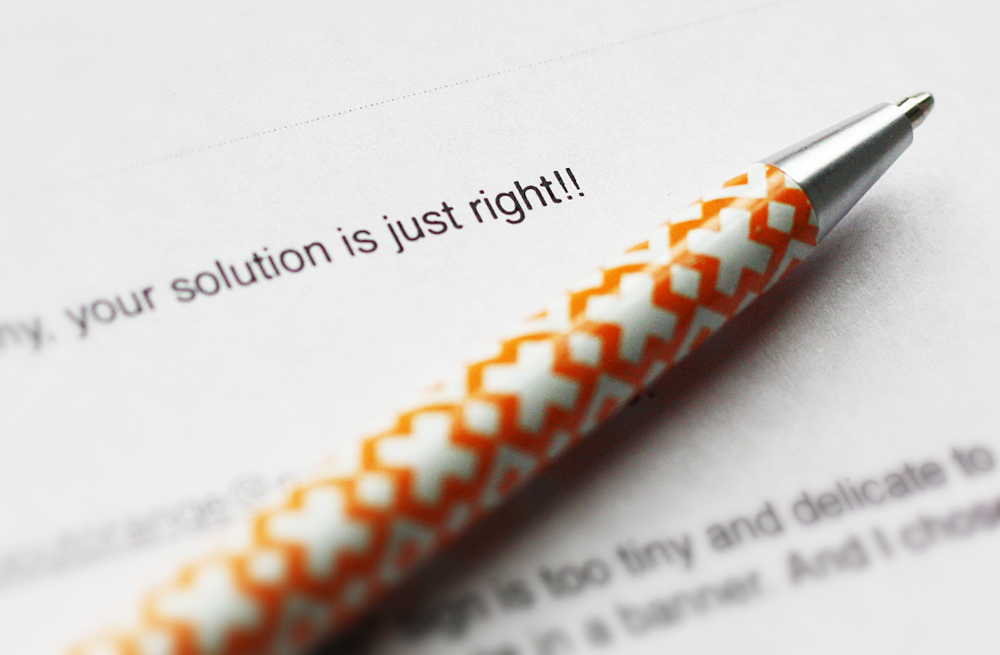You’ve hired a graphic designer for your project. You’re excited! They’re excited! Now, how do you work with the designer to ensure a great result? Avoid these communication pitfalls to keep thing moving smoothly.
Be precise. Don’t give vague direction.
When kicking off a project, you’ll need to answer questions about what you want. “We’d like the logo to look professional, authentic, and creative.” Those words might mean particular things inside your own head, but a designer needs more to go on. You’ve hired a professional, so you already expect the outcome to be “professional.” The logo will truly reflect your brand, so it will be “authentic.” Designers are always making something new, so the work is “creative.” Try to zero in on precisely what you’re after. If vocabulary isn’t your strong suit, that’s okay. Collect visual examples that make your point.
Be consistent. Don’t give conflicting direction.
Speaking of word choices, make sure your requests align. Don’t describe your ideal logo as “formal yet whimsical.” Those are both good, precise words. But it’s hard to imagine how a design can be both things. Think carefully about your creative brief or questionnaire answers and make sure terms don’t conflict.

These are different things.
Send all project information at once. Avoid bits and pieces.
“Here’s the first page of copy for our brochure. I’ll send you the other content as we write it, and the photos as soon as we get them from the photographer.” Nobody wants to wade through two weeks of emails when the project is ready to start. Send everything at once.
Be responsive. Don’t disappear.
Your designer hits “send” on an email to you full of brilliant designs. Then waits eagerly for a reply. Crickets. The designer starts to wonder. Was the message even delivered? Are you on vacation? Are you dead? Certainty sets in: you hated the designs. While the latter may be true (keep reading), kindly alleviate your designer’s panic with a quick email back: “Wonderful; thank you! I’ll review with the team and get back to you soon.” This gives you time to prepare your response, and your designer can stop holding their breath.
Seek feedback wisely. Probably don’t ask your mom.
Unless they understand the creative brief and the logic behind decisions made so far, don’t ask friends and relatives to critique the design. Their input will be subjective and likely unhelpful. (Mom’s favorite color is red, but it doesn’t mean your logo should be.) Leave the uninformed out of the design process.

Pick one design option. Don’t Frankenstein.
Frankenstein: what designers call it when a client loves several different design options and wants to merge them all together. The resulting hybrid is almost always weaker than the original concept. Yes, there might be cases when an aspect of one design can successfully be applied to another. Ask respectfully if you’re not sure. But you’ll probably need to pick one design and say goodbye to the beloved runner-ups.
Describe desired outcomes. Don’t give exact solutions.
When a design needs improvement, explain the desired outcome instead of how to get there. Rather than “Make that sentence bold,” try “This idea is important, so this sentence needs to stand out more from the rest of the copy.” Then let your designer figure out the best way to do that. Maybe that text could be larger. A different color. Italic. In a different typeface or inside a box. Your designer will likely have more (and better-looking) ideas than you, so let your designer be the designer.
Ask for new ideas. Don’t say you hate the design.
“I don’t like it” feels a bit like a kick in the shins, even to a seasoned pro. Your designer poured blood, sweat, and tears into the work, so avoid dismissing the design wholesale. Instead, talk about what aspects of the design are meeting the project objectives and what aspects don’t align yet. Then ask if the designer has any other ideas for how to meet the goal. Designers perk up when asked for ideas!
Recent feedback from a real client: “I’ll be honest, I was hoping for an example with something brighter, e.g. brighter orange, yellow, blue, red, etc. I can like some of these, but none of them jump out. Do you have any thoughts on brighter colors?” Bingo. Of course I do. Good job, client.
What happens if you break all the rules?
Don’t worry. An experienced designer will still be able to fish helpful answers out of you to get what they need. But it takes extra time and energy that could have gone into the design itself. Be just a little more thoughtful in your communication, and your project will move along smoothly. (And you’ll probably end up being their favorite client.)

